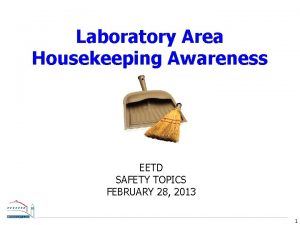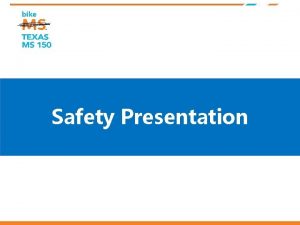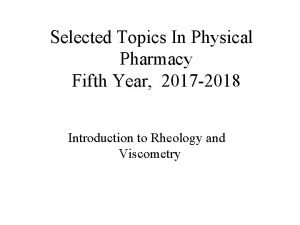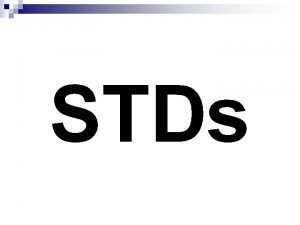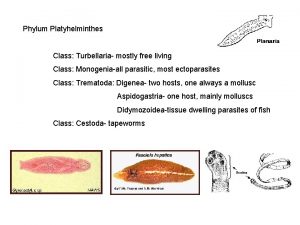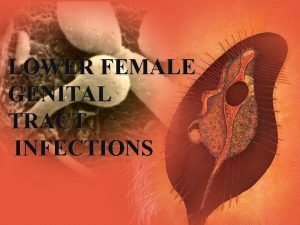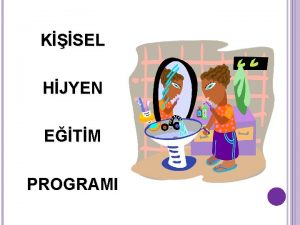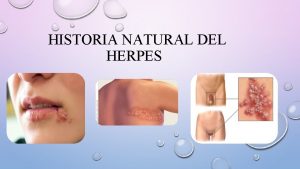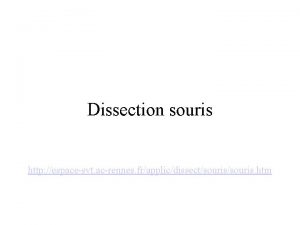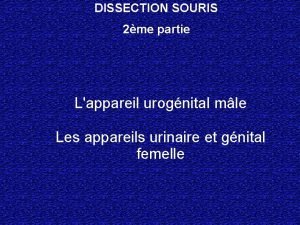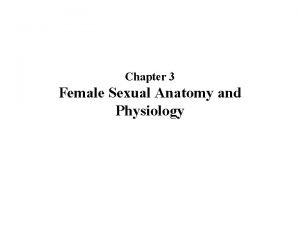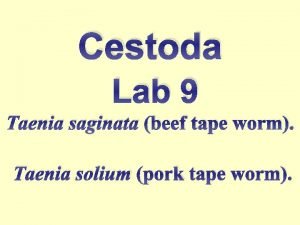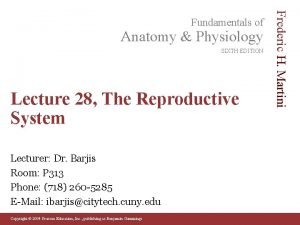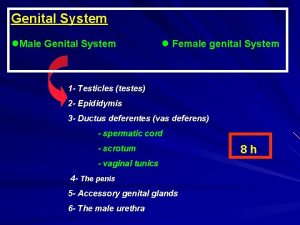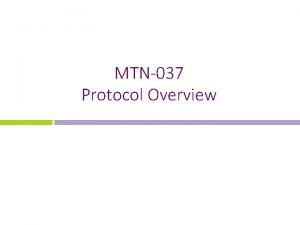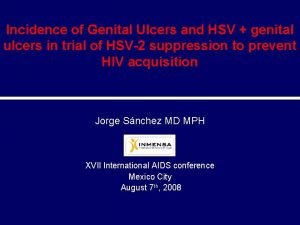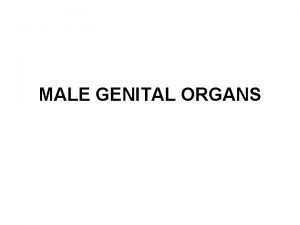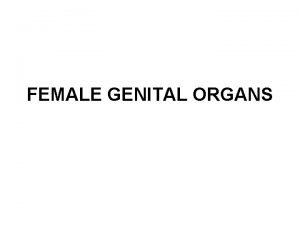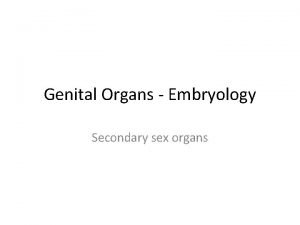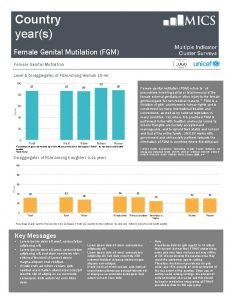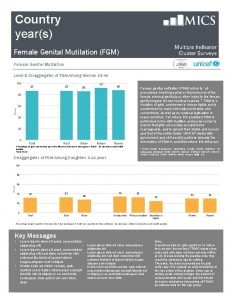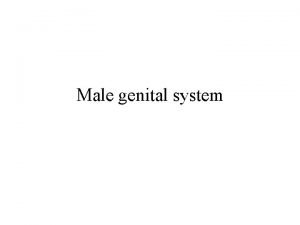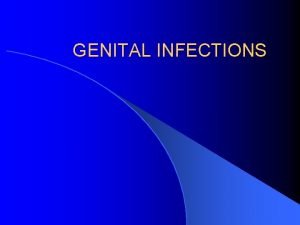MTN037 Safety Overview of Topics Physical and Genital

































- Slides: 33

MTN-037 Safety

Overview of Topics Physical and Genital Exams Medical and Menstrual History STI Management Concomitant Medications Prohibited Medications and Practices

Physical Examination: Timing and Documentation When: Required at Screening and enrollment and, as indicated, at other times throughout study Documentation: Physical Exam CRF is recommended source document Transcribe medically-relevant abnormal findings at Screening or Enrollment onto Baseline Medical History CRF During follow-up, transcribe abnormalities onto AE CRF as needed Cross-reference with Con Meds Log

Physical Examination Components Temperature Abdomen Blood pressure Lymph nodes Pulse HEENT Respirations Neck Weight Oral Mucosa General Appearance Heart Height Lungs Waist measurement Extremities Neurological Skin

Pelvic Examination If indicated Including at screening and beyond Genital bleeding attempt to avoid pelvic during menses Mild bleeding secondary to speculum insertion is not an AE

Pelvic Exam Terminology Use terms from the Pelvic Exam CRF or FGGT Use routine QC/QA opportunities to help ensure consistency of terminology across staff and exams Common Pelvic Finding Terms: Erythema, Edema, Petechiae, Ecchymosis, Peeling, Ulceration, Abrasion and Laceration

Pelvic Exam Technique Naked eye examination – external genitalia Palpate for inguinal lymphadenopathy Do NOT insert the speculum before examining the external genitalia Cervix and vagina – internal genitalia Warm water speculum lubrication only If cervix is poorly visualized, withdraw speculum conduct internal exam to establish position of the cervix and then re-insert the speculum

Pelvic Exam Technique Remove visual obstruction (mucus, etc. ) Gentle dabbing saline-moistened swab Avoid local trauma/bleeding Bimanual exam – when clinically indicated Vaginal fluid samples are blindly collected (despite if pelvic is performed)

Pelvic Exam Findings NORMAL Gland openings Nabothian cysts Mucus retention cysts Gartner’s duct cysts Blood vessel changes other than disruption Skin tags Scars Cervical ectopy IUCD strings Some (scant) bleeding from speculum insertion/removal or biopsy

Pelvic Exam Findings Epithelium Superficial epithelial disruption (does not penetrate subepithelial tissue) OR localized erythema/edema Deep epithelial disruption penetrates into and exposes the subeptheial tissue, including, sometimes vessels

Pelvic Exam Findings Blood vessels Petechia Ecchymosis

Male Genital Exam External genital examination performed as clinically indicated (naked eye and held magnifying glass) Entire penile surface Internal and external foreskin (if present) Shaft Glans Urethral meatus Scrotum Inguinal lymph nodes

Anorectal Exams Required at all visits up until the final contact (when it is performed, if clinically indicated) Anal exam for hemorrhoids, lesions, lumps, rash, ulcers If perianal ulcers or vesicles are observed then pursue HSV 1/2 swabbing after visual examination and PRIOR to digital exam Digital rectal exam – PRIOR to anoscope/sigmoidoscope Rectal specimen collection – sparing lubrication of anoscope A reminder of NO use of NSAIDs, aspirin PRIOR to rectal sample collections (PK, PD, mucosal safety biopsies) Not allowed: non-study based enemas/douches or laxatives

Anorectal Biopsies Anoscopy – sampling occurs 15 cm from the anal verge Vitals signs obtained and documented following tissue collection Small amount of bleeding from the rectum is normal (noticeable when wiping after a bowel movement) for 2 -3 days after the procedure Excessive bleeding (of fever, severe abdominal or anorectal pain, anal discharge) is not expected and is reportable and ought to prompt ER evaluation

Baseline Medical History Past medical history Past problems, including those where medication was taken for an extended period of time Previous surgeries Gynecologic history Allergies (drugs, latex, seasonal) Any current symptoms/conditions she is having

Baseline Medical History Guide Baseline Medical History Questions

Baseline Bleeding Baseline Menstrual History Collected at Screening Documented in chart notes or site-specific form Moving away from strict ranges for menses Moving towards FGGT definitions of bleeding abnormalities Changes in bleeding patterns will be assessed during follow-up


Baseline Medical Conditions Comprehensive Snap-Shot at Enrollment Information obtained from history taking Abnormal screening labs Abnormal physical exam findings Abnormal pelvic exam findings Documented on Baseline Medical History CRF

Follow-up Medical History Medical history must be updated at all follow-up visits Are previously reports conditions ongoing? Are there new or worsening symptoms? Site clinicians can use their expertise to elicit complete and accurate information How are you? At your last visit, you reported X. Has this resolved? Any current symptoms? Any issues since your last visit? Have you taken any medications since your last visit?

Follow-up Medical History Documentation Review MUST be documented Chart notes, or Site specific tool All newly-identified symptoms and conditions will be documented on the AE Log CRF With exception of abnormal bleeding

Reporting GU AEs Vaginal discharge per FGGT Participant report Observed by the clinician If captured both by history and on examination, only report the one with the more severe grade Vaginal bleeding Record any genital bleeding that is different from baseline and NOT attributable to contraceptive use

STI Evaluations Performed Chlamydia Gonorrhea Syphilis HIV 1/2 HSV 1/2 detection (as clinically indicated) Hepatitis B Hepatitis C Worthwhile to remember sites: rectal vs genito-urinary vs pharyngeal for gonorrhea and chlamydia

Female participants Symptomatic BV Symptomatic vulvovaginal candidiasis In the absence of laboratory confirmed diagnosis, use the term “vulvovaginitis” if 2 or more are present: Pain Itching Erythema Edema Rash Tenderness discharge

Female participants Cervicitis – when 2 ore more are present in the absence of a laboratory-confirmed STI, report as “cervicitis” and follow the DAIDS FGGT Dyspareunia Erythema Edema Tenderness Discharge

UTI Suspected UTIs may be clinically managed based on the presence of symptoms consistent with a UTI Urine dipstick may be performed per site standard of care but sites are expected to send a urine culture for definitive diagnosis/capture Capture abnormalities from the dipstick (protein, glucose) in the Baseline Medical History Log CRF per DAIDS toxicity table

HIV testing If at screening and/or enrollment a participant has signs/symptoms suggestive of acute HIV, the participant is NOT eligible for enrollment Participants who fail screening due to concern for acute HIV should have repeat testing no sooner than two months following the prior negative HIV test. If the HIV antibody test is negative and the participant no longer has symptoms suggestive of acute viral infection, then the participant may undergo a second screening attempt for the study

HIV Reporting HIV is NOT included in the DAIDS Toxicity Table and is NOT considered an AE for data collection/reporting NO reporting of “HIV” or “HIV infection” You MAY report “seroconversion illness” if a participant seroconverts and develops one or more signs of symptoms of acute HIV

Concomitant Medications Log CRF Prescription and OTC medications/preparations (including rectal lubricant) Vaccinations Vitamins and other nutritional supplements Herbal, naturopathic, traditional preparations

Permanent Product Discontinuation HIV acquisition Pregnancy or breastfeeding Anogenital STIs Participant unwillingness or inability to comply/adhere to study procedures. Reported use of PEP or Pr. EP Anticoagulant use (warfarin, low molecular weight heparin, etc. ) Use of CYP 3 A inhibitors/inducers

Product Holds Product hold parameters Grade 1 and 2 not related: continue Grade 2 related: product hold and consult with PSRT Grade 3 and higher: permanent product discontinuation and PSRT notification

Prohibited Medications

Prohibited Practices Sexual Practices Inserting any non-study products (including sex toys into the rectum) Receptive anal intercourse (RAI) Rectal stimulation via fingers Receptive oral anogenital stimulation FOR FEMALES: Receptive penile-vaginal intercourse or inserting anything in the vagina including: spermicides, vaginal medications (including hormones) vaginal douches, lubricants and moisturizers, sex toys (vibrators, dildos, etc. ) Entire duration of Study 72 hrs prior 72 hrs after to study visits (V 2 -8 a) x x x x
 Housekeeping in laboratory
Housekeeping in laboratory Hand safety toolbox talk
Hand safety toolbox talk April safety topics
April safety topics Safety topics for august
Safety topics for august Safety images
Safety images Forklift safety meeting topics
Forklift safety meeting topics Winter driving safety topics
Winter driving safety topics Safety moment presentation
Safety moment presentation Spring safety topics
Spring safety topics Safety awareness topics
Safety awareness topics What is physical storage media
What is physical storage media Physical pharmacy topics
Physical pharmacy topics Male std warning signs
Male std warning signs Male genital variation
Male genital variation Genital hijyen
Genital hijyen Etapa fálica
Etapa fálica Cestodes
Cestodes Tinedazole
Tinedazole Genital hijyen nedir
Genital hijyen nedir Genital hijyen nedir
Genital hijyen nedir Historia natural del herpes genital
Historia natural del herpes genital Hsv-2 oral transmission rates
Hsv-2 oral transmission rates Ciclo vital familiar
Ciclo vital familiar Dogfish shark internal anatomy
Dogfish shark internal anatomy Espace svt ac rennes dissection souris
Espace svt ac rennes dissection souris Tubercules quadrijumeaux
Tubercules quadrijumeaux Patricia castillo anal
Patricia castillo anal Etapa incorporativa
Etapa incorporativa External genital
External genital Beef jerky gravid
Beef jerky gravid External genital
External genital Function of male
Function of male Vaginal testicule
Vaginal testicule Phallic stage of development
Phallic stage of development
